Have you ever wondered why your curls behave differently from your friend’s, even though you both have natural hair? Understanding afro hair types is the first step toward embracing your unique texture and achieving the healthy, beautiful hair you’ve always wanted. Whether you’re just beginning your natural hair journey or looking to refine your hair care routine, this comprehensive guide will help you identify your specific hair type and learn how to care for it properly.
What Are Afro Hair Types?
Afro hair types represent some of the most beautiful and diverse textures in the world. According to the widely recognized Andre Walker Hair Typing System, afro-textured hair falls under Type 4 classification, characterized by tightly coiled, kinky patterns that create naturally voluminous styles. Coily and afro hair is considered one of the most delicate types of curly hair, typically classified as Hair Type 4A, 4B, or 4C.
Understanding your specific afro hair type isn’t just about labels—it’s about discovering what your hair needs to thrive. Each subtype within the Type 4 category has distinct characteristics that influence everything from moisture retention to styling techniques. The three primary afro hair types are 4A, 4B, and 4C, and many people have a combination of these textures across different areas of their head.
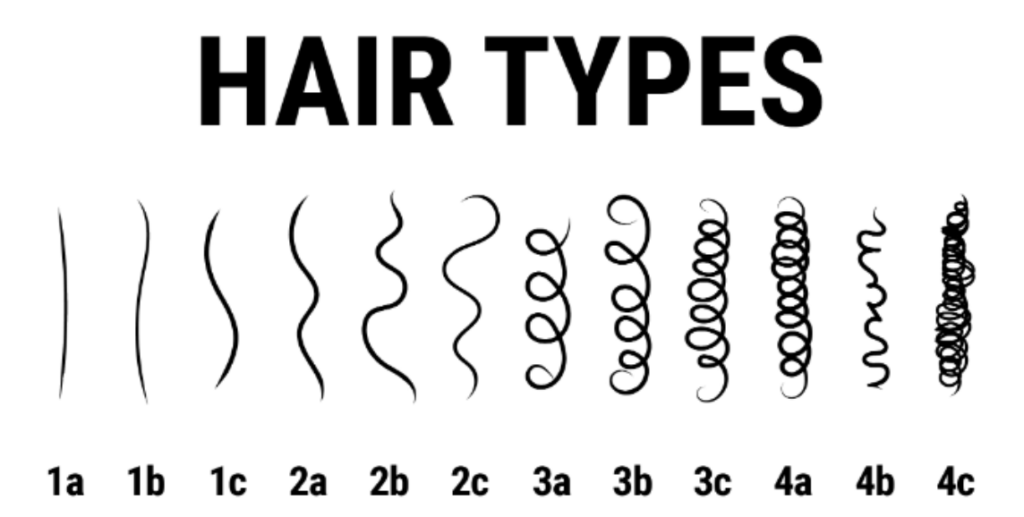
Breaking Down the Three Main Afro Hair Types
Type 4A: The Defined Coil
Type 4A hair is perhaps the most recognizable among afro hair types, featuring well-defined, springy coils that form an S-shaped pattern. When you pull a strand of 4A hair, you’ll notice it has a visible curl pattern that bounces back into place. Type 4A features defined coils that benefit from moisture and creams to keep curls popping.
This afro hair type tends to have more natural sheen compared to 4B and 4C textures, and it generally retains moisture better than its tighter-coiled counterparts. The strands are densely packed but maintain enough definition to create distinct curl clumps. People with 4A hair often find that their curls respond well to wash-and-go styles and curl-defining products.
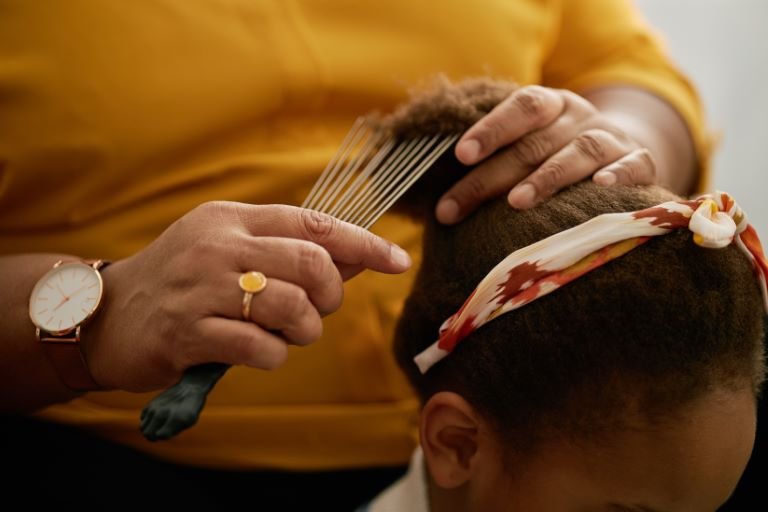
Key characteristics of 4A afro hair types:
- Visible S-shaped curl pattern
- Soft, springy texture when properly moisturized
- Moderate shrinkage (typically 50-70%)
- Responds well to lighter creams and leave-in conditioners
- Can achieve defined curl patterns with minimal manipulation
Type 4B: The Zigzag Pattern
Among afro hair types, 4B stands out with its unique zigzag pattern rather than a spiral curl. Type 4B curls are less defined and smaller than 4A, with texture ranging from wiry and coarse to fine and thin, forming a Z-shaped pattern when gently pulled. This texture creates a beautifully fluffy appearance but requires specific care techniques.
Type 4B hair experiences significant shrinkage, often appearing much shorter than its actual length when dry. The bends in the hair shaft make this afro hair type more susceptible to tangling and breakage if not handled gently. Type 4B features zigzag curls with shrinkage that require deep hydration and gentle care.
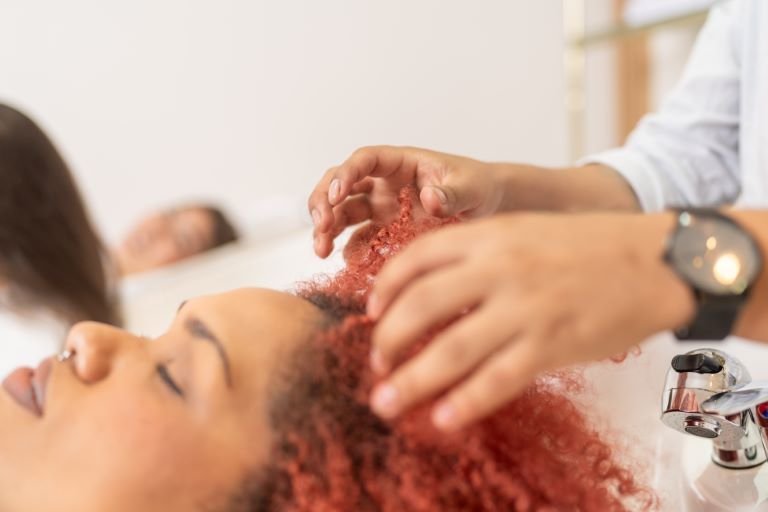
Key characteristics of 4B afro hair types:
- Sharp angles and zigzag bends instead of curls
- Can range from fine and soft to coarse and wiry
- High shrinkage rate (70-80%)
- Less visible curl definition without product
- Benefits from butter-based moisturizers and protective styling
Type 4C: The Tightest Coil
Type 4C represents the most tightly coiled of all afro hair types. Type 4C hair is similar to 4B with densely packed strands, but experiences less definition and more shrinkage, with strands so tightly coiled they’re incredibly delicate. This texture creates an incredibly full, cotton-like appearance that can defy gravity when properly cared for.
Type 4C hair shows no defined curls without styling and requires more regular moisture to achieve most styles. The extreme shrinkage of 4C hair—sometimes up to 90%—means that hair that reaches your shoulders when stretched might appear only a few inches long in its natural state. This afro hair type is the most fragile and demands the gentlest handling and most intensive moisture routine.
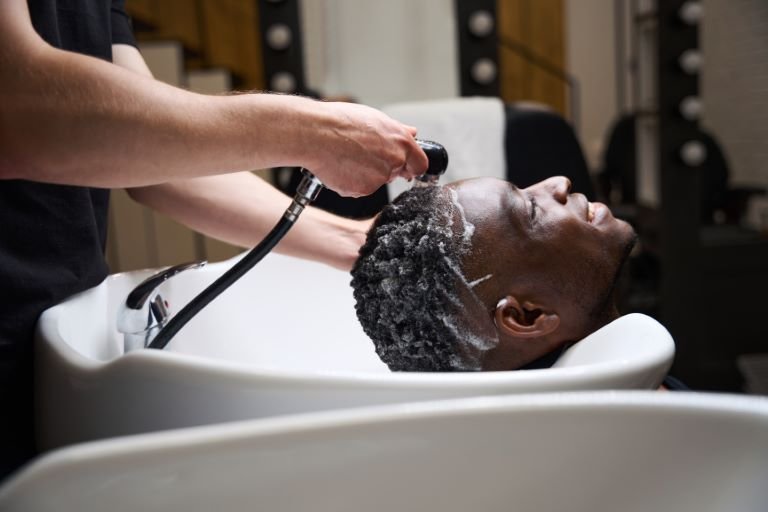
Key characteristics of 4C afro hair types:
- Extremely tight, densely packed coils
- Minimal to no visible curl definition
- Maximum shrinkage (75-90%)
- Requires heavy moisturizers and sealants
- Most susceptible to breakage and needs protective styling
- Creates the most dramatic volume when styled
Understanding Hair Porosity Across Afro Hair Types
Regardless of your specific afro hair type, understanding your hair’s porosity is crucial for developing an effective care routine. Hair porosity refers to your hair’s ability to absorb and retain moisture, and it can vary across different afro hair types.
For those with low porosity hair, which has tightly packed cuticles that resist moisture absorption, lightweight water-based products are ideal. Low porosity hair often feels smooth and can take a long time to dry. If you have this porosity level with any of the afro hair types, you’ll want to use heat to help products penetrate the hair shaft.
The LOC method is typically best for type 4 and high porosity hair because it has larger open pores that can absorb more product. High porosity hair absorbs moisture quickly but loses it just as fast, requiring heavier sealants to lock in hydration.
To test your hair porosity, try the float test: place a clean strand of hair in a glass of water. If it sinks immediately, you have high porosity; if it floats, you have low porosity; if it suspends in the middle, you have normal porosity.
Essential Care Routines for All Afro Hair Types
Caring for afro hair types requires a thoughtful approach that prioritizes moisture, gentle handling, and protective styling. Here’s a comprehensive care routine that works across all Type 4 textures:
Deep Conditioning Is Non-Negotiable
All afro hair types benefit from weekly deep conditioning treatments. Use products rich in proteins and moisturizing ingredients like shea butter, coconut oil, and aloe vera. Apply heat using a hooded dryer or heat cap to help the treatment penetrate the hair shaft more effectively, especially if you have low porosity hair.
The LOC or LCO Method
The LOC method involves layering products: L for liquid (water-based moisturizer), O for oil (to seal), and C for cream (to provide additional moisture). This technique is particularly effective for afro hair types because it creates multiple layers of moisture protection. For those with low to normal porosity among the afro hair types, the LCO method (switching the order of oil and cream) might work better.
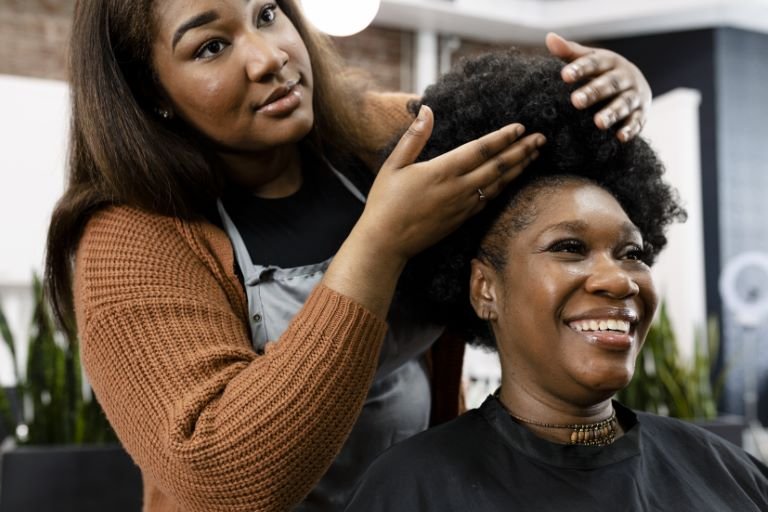
Detangling with Care
Type 4B hair can be prone to tangling, making regular gentle detangling essential. Always detangle on damp, product-laden hair using your fingers first, then a wide-tooth comb or detangling brush. Work from the ends up to the roots, never forcing through knots. This advice applies to all afro hair types but is especially critical for 4B and 4C textures.
Protective Styling
Protective styles like braids, twists, and updos keep the ends of your hair tucked away, reducing manipulation and preventing breakage. This is particularly important for afro hair types, which are more prone to dryness and fragility. However, ensure your protective styles aren’t too tight, as this can cause traction alopecia over time.
Nighttime Protection
Invest in a satin or silk pillowcase, or wear a satin bonnet or scarf to bed. Cotton pillowcases absorb moisture from your hair and create friction, leading to breakage—a concern for all afro hair types. This simple step can significantly improve your hair’s health and moisture retention.
Common Myths About Afro Hair Types
Many people mistakenly believe afros are the only style for 4A, 4B, and 4C hair types, but there are numerous beautiful and healthy hairstyles available, including two-strand twists and pineapple updos. Let’s debunk some common misconceptions:
Myth: Afro hair types don’t grow long. The truth is, afro-textured hair grows at the same rate as other hair types—approximately half an inch per month. The difference is that shrinkage and breakage from dryness make it appear shorter. With proper moisture and protection, afro hair types can achieve impressive lengths.
Myth: You should wash afro hair types infrequently. While it’s true that afro hair types shouldn’t be washed as often as straight hair due to moisture considerations, completely avoiding washing leads to product buildup and scalp issues. Most people with Type 4 hair should aim to cleanse their scalp every 1-2 weeks.
Myth: All afro hair types are the same. As we’ve explored throughout this guide, the differences between 4A, 4B, and 4C are significant and require tailored approaches to hair care.
Product Recommendations by Afro Hair Type
Choosing the right products for your specific afro hair type can transform your hair care experience:
For 4A afro hair types: Look for curl-defining creams, lighter leave-in conditioners, and gel-based products that enhance your natural curl pattern without weighing hair down. Products with glycerin work well for maintaining moisture.
For 4B afro hair types: Butter-based moisturizers, thick leave-in conditioners, and creamy stylers help manage the zigzag pattern and provide the deep hydration this texture needs. Consider products with ingredients like avocado butter and jojoba oil.
For 4C afro hair types: The heaviest moisturizers, including whipped butters and thick creams, work best. Look for products specifically formulated for maximum moisture retention, containing ingredients like shea butter, castor oil, and mango butter. Water-based sprays followed by heavy sealants are essential.
Across all afro hair types, sulfate-free shampoos or co-washing (washing with conditioner only) helps preserve natural oils that keep hair healthy and moisturized.
When Hair Loss Affects Your Afro Hair Type Journey
Hair loss doesn’t discriminate—it can affect people with all afro hair types. Whether you’re experiencing thinning edges from tight protective styles (traction alopecia), hormonal changes, or genetic pattern baldness, losing your natural texture can be emotionally challenging.
The good news is that modern hair restoration techniques have evolved to address the unique needs of afro hair types. If you’re dealing with significant hair loss and traditional methods haven’t worked, you might want to explore professional solutions.
Afro Hair Transplant in Turkey: A Game-Changing Solution
Turkey has emerged as a global leader in hair restoration, and specialized clinics now offer expertise specifically tailored to afro hair types. Hair transplant surgeons in Turkey provide quick and painless results thanks to their expertise, with improved techniques such as FUE and DHI making procedures safer.
What makes afro hair transplants unique? The natural curvature of afro hair follicles creates dense, spring-like curls, meaning fewer hair grafts are usually needed to maintain density compared to straight hair. This is because the coiled nature of Type 4 hair creates more visual volume per follicle.
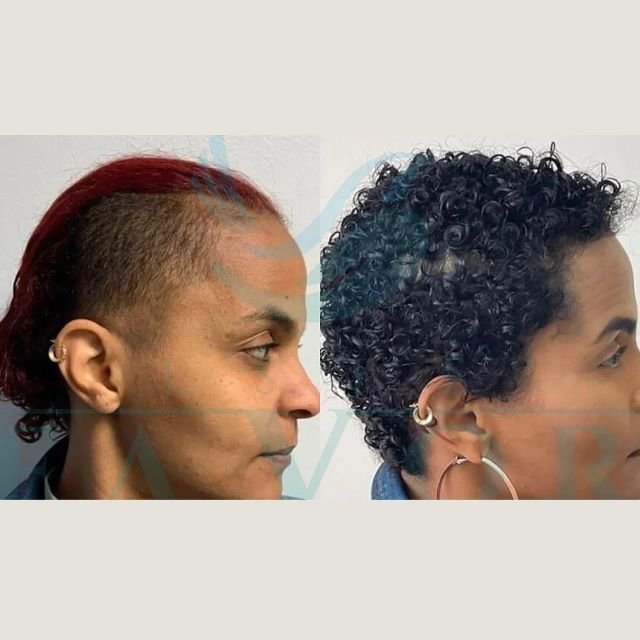
Afro-textured hair presents one of the most technically demanding challenges in hair restoration due to its tight curls, curved follicles, and upward growth angle, requiring a specialized surgical approach. Not all surgeons have the expertise to work with these unique characteristics, which is why choosing a clinic with specific experience in afro hair types is crucial.
Why Choose Turkey for Afro Hair Restoration?
Turkey offers several compelling advantages for those considering hair transplants for afro hair types:
- Specialized Expertise: Turkish clinics have extensive experience with diverse hair types, including all categories of Type 4 hair
- Advanced Techniques: Methods like Sapphire FUE and DHI have been refined specifically for the curved follicles characteristic of afro hair types
- Cost-Effective Solutions: Hair transplant procedures in Turkey typically cost 60-70% less than in Western countries, without compromising quality
- Comprehensive Care: Most Turkish clinics offer all-inclusive packages covering the procedure, accommodation, and post-operative care
Turkey has become a hub for hair transplants, allowing patients to benefit from a combination of quality treatment, affordable costs, and the opportunity to explore a beautiful destination during recovery.
Este Favor: Leading the Way in Afro Hair Restoration
When it comes to the best Afro hair transplant in Turkey, Este Favor stands out as the top destination for those seeking expert care and authentic results. The clinic’s highly specialized team has extensive experience with Afro-textured hair types, including Type 4A, 4B, and 4C. They understand the unique challenges of these hair types—from the naturally curved follicle structure to the precise implantation angles required to achieve a natural and long-lasting look. With advanced techniques and personalized care, Este Favor ensures that every patient receives the best possible outcome for their Afro hair transplant in Turkey.
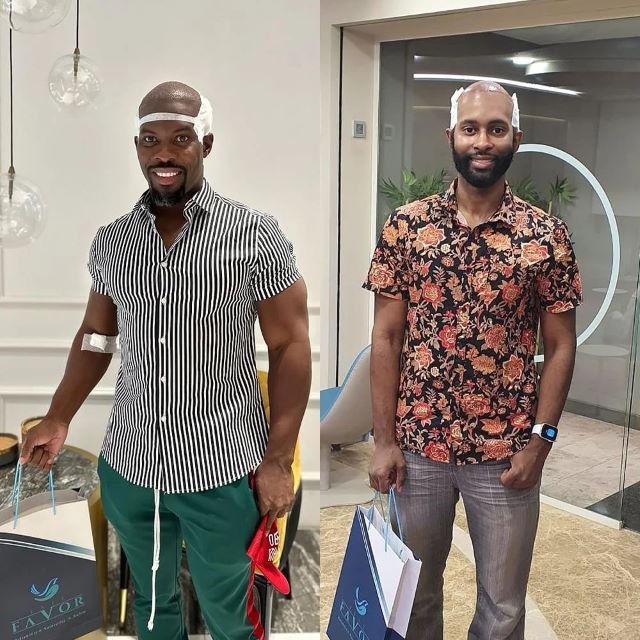
Este Favor’s approach to afro hair types includes:
- Pre-procedure consultations that assess your specific hair type and design a customized restoration plan
- Surgeons with extensive training in extracting and implanting curved follicles without damage
- State-of-the-art facilities using the latest FUE and DHI techniques
- Comprehensive aftercare guidance tailored to afro hair types
- Natural-looking results that blend seamlessly with your existing texture
For anyone struggling with hair loss affecting their 4A, 4B, or 4C hair, exploring professional restoration options can be life-changing. Among the Top 10 Hair Transplant Clinics in Turkey Reviewed in 2025, Este Favor stands out as a leading choice for Afro hair transplants. To learn more about why Este Favor is considered the top destination for Afro-textured hair restoration, check out their detailed guide on the Benefits of Having an Afro Hair Transplant in Turkey.
Embracing Your Natural Afro Hair Type
Understanding your afro hair type—whether you have the defined coils of 4A, the zigzag bends of 4B, or the tight coils of 4C—is fundamental to developing a successful hair care routine. Each texture within the Type 4 family has its own beauty and requirements, and there’s no “better” or “worse” among afro hair types.
The key to healthy hair lies in:
- Recognizing your specific afro hair type and porosity level
- Maintaining consistent moisture through appropriate products and techniques
- Protecting your hair from manipulation and environmental damage
- Being patient with your hair growth journey
- Seeking professional help when needed, especially for hair loss concerns
Your natural texture is unique and beautiful. Whether you’re caring for your existing afro hair type or considering restoration options to reclaim your natural texture, the most important step is understanding what your hair needs to thrive.
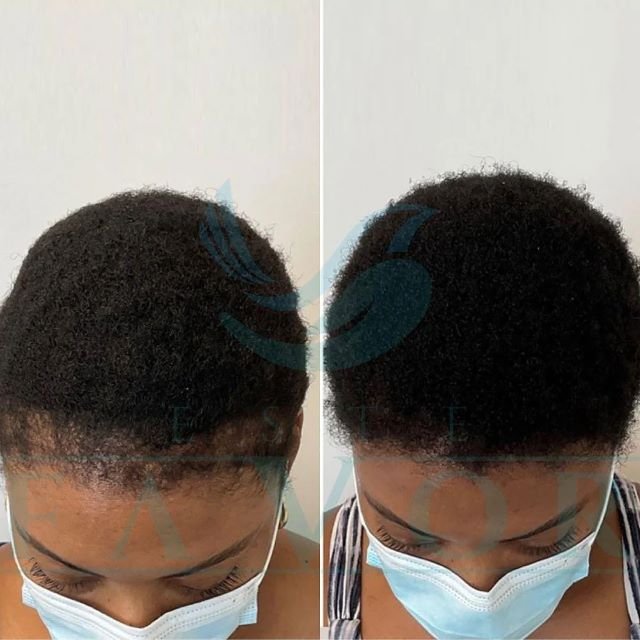
Final Thoughts on Your Afro Hair Type Journey
Navigating the world of afro hair types can feel overwhelming at first, but armed with the right knowledge and products, you can achieve the healthy, thriving hair you deserve. Remember that hair care is personal—what works for someone else with your afro hair type might not work for you, and that’s okay. Experimentation, patience, and consistency are your best tools.
For those dealing with hair loss that affects their natural texture, modern restoration techniques offer hope. With specialized clinics like Este Favor bringing expertise in all afro hair types to accessible locations, reclaiming your natural texture is more achievable than ever.
Your hair journey is uniquely yours, and understanding your afro hair type is just the beginning. Embrace your texture, nurture it with the care it deserves, and don’t hesitate to explore professional solutions when needed. After all, healthy, beautiful hair isn’t just about appearance—it’s about confidence, self-expression, and celebrating the natural beauty that makes you, you.
Ready to take the next step in your hair journey? Whether you’re perfecting your care routine for your specific afro hair type or considering professional restoration options, knowledge is power. For more information about hair transplant solutions tailored to Type 4 hair, visit Este Favor’s comprehensive guide and discover how specialized expertise can help you achieve your hair goals.